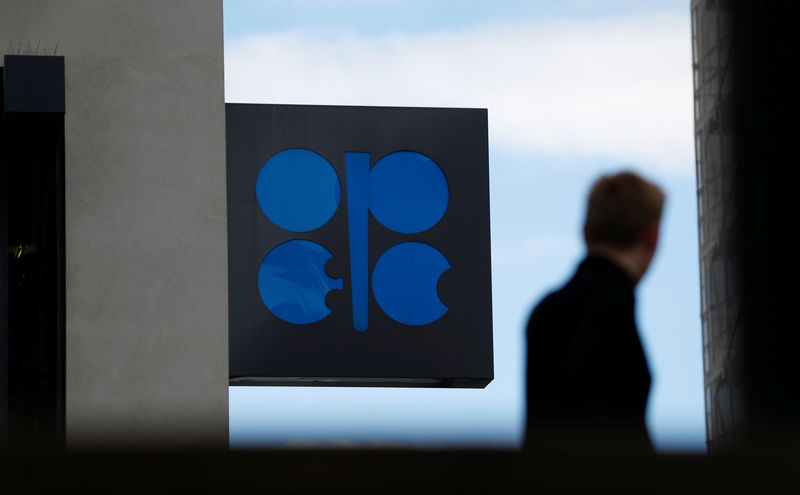By Alex Lawler
LONDON (Reuters) - OPEC oil supply has fallen in November from a two-year high due to U.S. sanctions on Iran, a Reuters survey found, although most of the output gap left by Iran was plugged by Saudi Arabia and the UAE in response to calls from U.S. President Donald Trump.
The 15-member Organisation of the Petroleum Exporting Countries has pumped 33.11 million barrels per day this month, the survey on Friday found, down 160,000 bpd from October, which was the highest by OPEC as a group since December 2016.
The survey adds to indications that OPEC output remains ample despite U.S. sanctions imposed on Iran this month. Oil prices have slid 30 percent since early October on worries a new glut may emerge. OPEC and its allies including Russia meet on Dec. 6-7 in Vienna to discuss cutting supply.
With Saudi Arabia and Russia pumping at record rates, U.S. output surging and forecasts pointing to lower demand in 2019 due to a slowing economy, some analysts are sceptical the producers will avoid generating a surplus.
"The most likely outcome of next week's OPEC meeting is a fudge," said Stephen Brennock of oil broker PVM. "Russia and Saudi Arabia will agree to curb production but by less than is needed to prevent a supply imbalance in early 2019."
OPEC, Russia and other non-members agreed in June to return to 100 percent compliance with output cuts that began in January 2017, after months of underproduction in Venezuela and Angola that had pushed adherence above 160 percent.
In November, the 12 OPEC members bound by the supply-limiting agreement boosted compliance to 120 percent as production fell in Iran, from a revised 110 percent in October, the survey found.
IRAN DECLINE
The biggest drop in OPEC supply this month has come from Iran, according to the survey.
Exports fell at times below 1 million bpd as returning U.S. sanctions discouraged companies from buying Iranian oil, although volumes rose later in the month, sources in the survey said. Sanctions waivers granted to eight buyers could lead to higher exports in December, analysts have said.
The second-biggest decline was in Iraq, where exports from southern Iraqi terminals were curbed by bad weather, despite the resumption of some Kirkuk exports in the north after a one year halt.
There were small falls in production in Libya and Nigeria, both exempt from the supply pact. OPEC is discussing including one or both of the African producers in a 2019 supply deal.
The biggest rise was in Saudi Arabia, where supply hit a record 11 million bpd. Trump has been urging Saudi Arabia and other producers to pump more oil to curb rising prices and make up for losses from Iran.
UAE output rose following a jump in October, reaching 3.35 million bpd. The UAE says its oil-production capacity will reach 3.5 million bpd by the year-end.
Supply to market unexpectedly rose in Venezuela as two tanker-trackers reported a rise in exports, which have been declining for months due to the country's economic crisis.
Before Congo joined OPEC this year, the group had an implied production target for 2018 of 32.78 million bpd, based on cutbacks detailed in late 2016 and Nigeria and Libya's expectations of 2018 output.
OPEC excluding Congo pumped almost exactly that amount in November, according to the survey.

The Reuters survey aims to track supply to the market and is based on shipping data provided by external sources, Refinitiv Eikon flows data and information provided by sources at oil companies, OPEC and consulting firms.